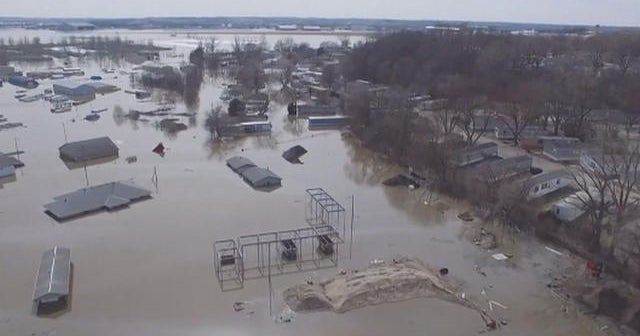Protecting Livestock From Flood Damage: A Practical Guide

Table of Contents
Pre-Flood Planning: Proactive Measures for Livestock Protection
Proactive planning is crucial for minimizing the impact of floods on your livestock. A well-defined plan can significantly reduce losses and improve the chances of a successful evacuation and recovery. This section focuses on developing a comprehensive strategy to protect your animals before a flood hits.
Creating a Flood Preparedness Plan
A robust flood preparedness plan is your first line of defense. This plan should be detailed and regularly reviewed.
- Develop an emergency plan: Outline evacuation routes, shelter locations (both temporary and long-term), and contact information for relevant authorities (local emergency services, agricultural extension agents), veterinary services, and neighbors who can assist.
- Identify high-risk areas: Map out areas on your farm most susceptible to flooding. This includes low-lying pastures, areas near rivers or streams, and locations with poor drainage. Develop contingency plans for moving livestock from these high-risk areas.
- Regularly update your plan: Weather patterns change, and new flood risks may emerge. Review and update your plan at least annually, or more frequently if significant changes occur on your farm or in the surrounding area. Consider incorporating information from local flood risk assessments.
- Practice your plan: Conduct regular drills to test your evacuation plan. This ensures efficiency and helps minimize stress during an actual flood. Practice moving your livestock, and make sure all involved understand their roles and responsibilities.
Improving Infrastructure for Flood Resilience
Investing in flood-resilient infrastructure can significantly reduce the risk of livestock losses. Here are several improvements you can make:
- Elevate buildings: Raise livestock buildings and storage areas above potential flood levels. This may involve building on stilts or using elevated platforms.
- Reinforce fences: Ensure your fences are strong enough to withstand floodwaters. Consider using stronger materials (e.g., stronger posts, higher tensile wire), and install additional bracing to prevent collapse. Check your fences regularly for weakness and repair promptly.
- Install flood barriers: Consider installing flood barriers or levees around vulnerable areas to divert floodwaters. These barriers can be temporary or permanent, depending on your needs and budget.
- Improve drainage: Enhance drainage around barns and pastures to prevent water accumulation. This involves creating ditches, installing drainage pipes, and ensuring proper grading.
Maintaining Up-to-Date Livestock Records
Accurate and up-to-date livestock records are crucial for insurance claims, efficient recovery efforts, and effective management during and after a flood.
- Detailed records: Keep accurate records of your livestock, including breed, age, sex, identification numbers (e.g., ear tags, microchips), and any health information.
- Insurance purposes: This information is vital for filing insurance claims and demonstrating the extent of your losses.
- Photographs and videos: Regularly photograph or video your livestock for documentation purposes. This visual evidence can be invaluable in the event of a flood.
Emergency Response During a Flood: Protecting Livestock in Real-Time
When a flood warning is issued, swift and decisive action is crucial. This section details how to protect your livestock during a flood event.
Safe and Timely Evacuation
The safest option during a flood is to evacuate your livestock to higher ground well before floodwaters arrive.
- Monitor weather forecasts: Pay close attention to weather forecasts and flood warnings. Evacuate early; don't wait until the flood is imminent.
- Appropriate transport: Use appropriate transportation methods based on the size and type of livestock. Trailers, trucks, and even temporary holding pens may be necessary.
- Prioritize vulnerable animals: Prioritize the evacuation of vulnerable animals, such as young, old, sick, or injured livestock.
- Safe handling: Handle animals calmly and carefully during evacuation to minimize stress and injuries.
On-Site Protection Strategies
If evacuation is impossible due to the speed of the flood or other limitations, implement these on-site protection strategies.
- Highest point: Move livestock to the highest point on your property.
- Secure animals: Secure animals to prevent them from escaping or being swept away by floodwaters.
- Food and water: Provide adequate food and water, ensuring access remains even in rising waters.
- Constant monitoring: Monitor animals closely for signs of stress or injury.
Seeking Emergency Assistance
Don't hesitate to seek assistance during a flood.
- Contact emergency services: Contact local emergency services and agricultural authorities for assistance with evacuation and other emergency needs.
- Veterinary assistance: Seek veterinary assistance for injured or distressed animals immediately.
Post-Flood Recovery: Caring for Livestock After a Flood Event
Post-flood recovery involves a multi-faceted approach to ensure the well-being of your livestock and the long-term health of your farm.
Assessing Damage and Animal Welfare
After the floodwaters recede, immediately assess the damage and the welfare of your livestock.
- Animal inspection: Carefully inspect all animals for injuries, illnesses (e.g., hypothermia, infections), and signs of stress.
- Veterinary care: Provide immediate veterinary care for injured animals. Clean and treat wounds promptly.
- Clean water and feed: Ensure access to clean water and adequate feed.
- Biosecurity: Implement strict biosecurity measures to prevent disease outbreaks.
Cleaning and Disinfecting Facilities
Thorough cleaning and disinfection are essential to prevent disease outbreaks after a flood.
- Remove debris: Remove all debris and contaminated materials from livestock buildings and pastures.
- Disinfection: Thoroughly clean and disinfect all livestock buildings, equipment, and feeding areas using appropriate disinfectants.
- Structural repairs: Repair any structural damage to buildings and fences to ensure the safety and well-being of your livestock.
Seeking Financial Assistance and Insurance Claims
Explore available financial assistance and insurance options after a flood.
- Insurance claims: Contact your insurance provider immediately to file a claim for flood-related damages. Keep detailed records of your losses.
- Government assistance: Explore available government assistance programs for farmers affected by floods. These programs may provide financial aid for recovery efforts.
Conclusion
Protecting livestock from flood damage requires careful planning, proactive measures, and swift response during emergencies. By implementing the strategies outlined in this guide—from developing comprehensive pre-flood plans to ensuring post-flood recovery—you can significantly minimize risks to your animals and safeguard your livelihood. Remember, effective preparedness and rapid response are key to protecting your livestock from flood damage and ensuring their long-term well-being. Don't delay; start planning your livestock flood protection strategy today!

Featured Posts
-
 Exclusive Report Hegseths Extensive Use Of Signal App For Pentagon Communications
May 07, 2025
Exclusive Report Hegseths Extensive Use Of Signal App For Pentagon Communications
May 07, 2025 -
 5880 Rally Projected Altcoin Poised To Outperform Xrp
May 07, 2025
5880 Rally Projected Altcoin Poised To Outperform Xrp
May 07, 2025 -
 Hawkgirl Vs Madame Web Isabela Merceds Acting Preference
May 07, 2025
Hawkgirl Vs Madame Web Isabela Merceds Acting Preference
May 07, 2025 -
 Mitchells Dominance Cleveland Cavaliers Triumph Over Brooklyn Nets
May 07, 2025
Mitchells Dominance Cleveland Cavaliers Triumph Over Brooklyn Nets
May 07, 2025 -
 Bitcoins Road To Us 100 000 A Look After The Recent Surge
May 07, 2025
Bitcoins Road To Us 100 000 A Look After The Recent Surge
May 07, 2025
Latest Posts
-
 Supermans Summer Special Kryptos Appearance Next Week
May 08, 2025
Supermans Summer Special Kryptos Appearance Next Week
May 08, 2025 -
 Summer Of Superman Exclusive Preview Superman And Krypto
May 08, 2025
Summer Of Superman Exclusive Preview Superman And Krypto
May 08, 2025 -
 Dont Miss It Superman Whistles To Krypto In Next Weeks Summer Of Superman Special
May 08, 2025
Dont Miss It Superman Whistles To Krypto In Next Weeks Summer Of Superman Special
May 08, 2025 -
 Next Weeks Summer Of Superman Superman And Kryptos Whistle Stop Adventure
May 08, 2025
Next Weeks Summer Of Superman Superman And Kryptos Whistle Stop Adventure
May 08, 2025 -
 The Academy Awards Biggest Snubs A Comprehensive List And Analysis
May 08, 2025
The Academy Awards Biggest Snubs A Comprehensive List And Analysis
May 08, 2025
